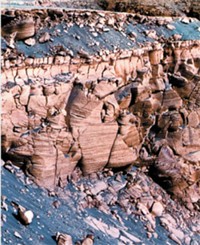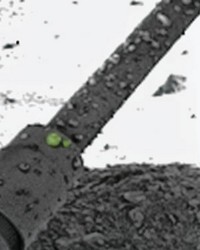Advertisement
Grab your lab coat. Let's get started
Welcome!
Welcome!
Create an account below to get 6 C&EN articles per month, receive newsletters and more - all free.
It seems this is your first time logging in online. Please enter the following information to continue.
As an ACS member you automatically get access to this site. All we need is few more details to create your reading experience.
Not you? Sign in with a different account.
Not you? Sign in with a different account.
ERROR 1
ERROR 1
ERROR 2
ERROR 2
ERROR 2
ERROR 2
ERROR 2
Password and Confirm password must match.
If you have an ACS member number, please enter it here so we can link this account to your membership. (optional)
ERROR 2
ACS values your privacy. By submitting your information, you are gaining access to C&EN and subscribing to our weekly newsletter. We use the information you provide to make your reading experience better, and we will never sell your data to third party members.
Physical Chemistry
Mars Soil pH Measured
Phoenix lander’s chemistry ‘lab’ finds soil is alkaline, friendly to life
by Elizabeth K. Wilson
June 27, 2008

The Phoenix Mars Lander has measured, for the first time, the pH of martian soil, and it’s an alkaline 8 or 9, scientists announced yesterday at a press briefing. That’s a level habitable by a broad spectrum of microbes and plant life.
The soil, near Mars’s north pole, also contains ions such as calcium and chloride, as well as water-bearing minerals, at least in the first few centimeters below the surface.
“We have found nutrients to support life, whether in the past, present, or future,” Samuel P. Kounaves, chemistry professor at Tufts University and lead scientist for the Phoenix wet chemistry lab, said at the briefing. “This is the type of soil you probably have in your backyard. It might grow asparagus well—strawberries not very well.”
The findings answer a question that’s long been debated: whether martian soil is basic or acidic. In the spot where Phoenix sits, “there’s nothing about [the soil] that’s caustic,” Kounaves said.
Phoenix, which is managed by the National Aeronautics & Space Administration and the University of Arizona, has largely completed the first of four wet chemistry experiments to detect inorganic species in martian soil samples. Scientists found magnesium, sodium, potassium, and chloride, and they expect results of their search for sulfate in the next few days. Addressing recent speculation that martian soil might be too salty to support life, Kounaves said the calcium and chloride levels in the soil sample appear to be “extremely low,” in the 100-parts-per-million range.
A soil sample that was heated to 1,000 °C in one of Phoenix’s eight ovens produced some water vapor, indicating that water bonded with minerals during a watery history. “The soil clearly has interacted with water in the past,” William V. Boynton, head of the team for the craft’s thermal and evolved-gas analyzer, said at the briefing.
It will be several weeks before scientists will be able to identify the minerals and say how much water was contained in them. They also don’t know yet whether the mineral-water interaction occurred in the location where the samples are being collected or whether it happened elsewhere and the resulting mixture blew into the area as dust, Boynton said.
During the next few weeks, the spacecraft’s robotic arm will continue digging soil samples, perhaps deeper into trenches it has already dug and into ice layers that Phoenix recently detected (C&EN, June 23, page 10).





Join the conversation
Contact the reporter
Submit a Letter to the Editor for publication
Engage with us on Twitter